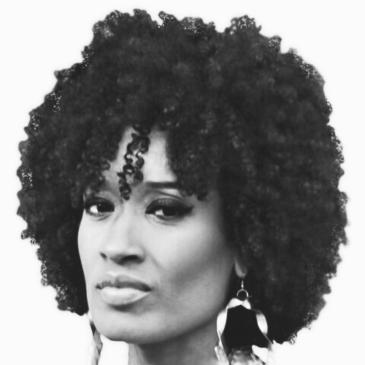Mikaila Brown is a fashion anthropologist with a doctorate in Anthropology and Education from Columbia University. After working for designers like Oscar de la Renta, Pamela Roland, and Betsey Johnson, she ran a socially conscious fashion line for four years. This has evolved into The Common Thread Project (TCTP), a travel and fashion brand which highlights the cultural diversities within the fashion industry by investigating the style trends of local communities. TCTP uses anthropological tools to unpack the historical, cultural, and political roots behind the trends that locals wear, specifically looking at the ways in which these communities use style choices to communicate who they are and what they value. Dr. Brown shares this knowledge with the public by offering cultural shopping tours through Airbnb’s new experiential arm. Her company also works with fashion brands to help them provide design options that are as culturally sensitive as they are consumable.

Fashion Design ManagementCornell Certificate Program
Request More Info
Overview and Courses
Have you ever seen a stunning piece of clothing in a store window or on a runway that took your breath away? Have you ever wanted to be a part of making trendsetting fashion products? Fashion is ready for innovation; the time has never been better for newcomers to disrupt the market as fashion brands seek out inventive new ways to sell products, promote diversity, and emphasize sustainability practices.
Whether your goal is to be a designer, trend forecaster, merchandiser, buyer, or production manager, this certificate program provides an overview of the fashion industry that combines consumer and industry knowledge with business and economics.
The courses in the program cover four major areas of fashion design management: trend forecasting, product line development, production planning, and distribution and marketing. After examining current trends, you will have the opportunity to conceptually design your own six-product fashion line that considers style, silhouette, color, and fabric choices. From there, you will explore the world of production planning and how factories are chosen to manufacture items for fashion brands. Finally, you’ll create a marketing and distribution plan to determine how to best bring your fashion line to market.
Once you’ve completed the program, you’ll have gained a strong foundation in how the business of fashion operates that can help you launch or grow your career in the industry.
The courses in this certificate program are required to be completed in the order that they appear.Course list
What does it mean for something to be "on trend"? In fashion, trends guide everything from design to consumer behavior, evolving and changing over years and even decades. Trend forecasting is how industry experts predict what new trends will become popular with consumers and how existing trends will evolve over time. A knowledge of trend forecasting is necessary for staying relevant in fashion, whether you are working for an established fashion house or starting your own line. This course will guide you through the trend forecasting process so you can create a relevant trend forecast, be it for your own fashion brand, a large industry brand, or a trend forecasting service.
You will research current fashion trends using primary and secondary sources to determine what trends will be prominent with consumers. This research will be used to choose a trend for your trend forecast report. You will then gather the data from your research and, using the GRAB method, interpret your findings around a target market of your choice. Once your data is collected and synthesized, you will use your findings to complete your trend forecast report.
- Jan 21, 2026
- Mar 18, 2026
- May 13, 2026
- Jul 8, 2026
- Sep 2, 2026
- Oct 28, 2026
- Dec 23, 2026
When you think about fashion, you often imagine a fashion line displayed at a store or coming down a runway. The development of the fashion line is a process that begins long before clothing is constructed and placed on a model. Product line development involves a significant amount of planning on the part of the designer as well as the other fashion professionals involved in the process.
In this course, you will develop a fashion product line, either for your own brand or for a brand of your choice. You'll start by identifying the target market, brand, and product type toward which you will design. Once you establish this foundation, you will develop the concept for your line and get feedback from your peers. You will use this feedback to conceptually design a six-piece fashion product line and an accompanying line sheet.
You are required to have completed the following course or have equivalent experience before taking this course:
- Fashion Trends and Forecasting
- Feb 4, 2026
- Apr 1, 2026
- May 27, 2026
- Jul 22, 2026
- Sep 16, 2026
- Nov 11, 2026
The quality of your product is integral to managing a successful fashion brand. When fashion garments are created in a factory setting for a brand, every element of the garment's production cycle must be planned. Forward thinking in garment production ensures that every piece is completed to your specifications in a timely manner and that the manufacturing facilities you choose will be the best fit for your product line.
In this course, you will explore the process of production planning used to create a fashion product line. You will begin by creating a bill of materials that can be used to communicate the fabric needs of each product in manufacturing. You will then consider how stitching, construction, and fit are used by manufacturers to create a garment that will appropriately fit your consumer. You'll conclude the course by examining how factories and manufacturers operate and filling out a time and action calendar that you can use to plan the manufacturing timeline of your product line.
You are required to have completed the following courses or have equivalent experience before taking this course:
- Fashion Trends and Forecasting
- Fashion Line Product Development
- Dec 24, 2025
- Feb 18, 2026
- Apr 15, 2026
- Jun 10, 2026
- Aug 5, 2026
- Sep 30, 2026
- Nov 25, 2026
Fashion is made to be worn, and consumers must have access to it in order to make that happen. Successful fashion product lines are not just well designed; they also meet sales goals, whether those goals are set by a larger fashion brand or by an independent designer. Distribution and marketing are the methods that fashion brands use to get product lines into stores and into the hands of consumers. Every element, from your sales plan and retail pricing scheme to your selected distribution channels, can be used to help reach your target customer.
In this course, you will begin by setting a sales goal and creating a sales plan using resources such as the apparel retail calendar and assortment planning. After you create your sales plan, you will examine how fashion brands set a retail cost for their products and establish a retail cost for key products. You will then design a marketing strategy using distribution and promotion methods to ensure that your products are accessible and appealing to your target consumers. By using this process, you can create an appropriate targeted marketing and distribution strategy for any fashion retail space and product assortment.
You are required to have completed the following courses or have equivalent experience before taking this course:
- Fashion Trends and Forecasting
- Fashion Line Product Development
- Production Planning
- Jan 7, 2026
- Mar 4, 2026
- Apr 29, 2026
- Jun 24, 2026
- Aug 19, 2026
- Oct 14, 2026
- Dec 9, 2026
Request more Info by completing the form below.
How It Works
- View slide #1
- View slide #2
- View slide #3
- View slide #4
- View slide #5
- View slide #6
- View slide #7
- View slide #8
- View slide #9
Faculty Authors
Tasha Lewis, Ph.D., is an associate professor in the Department of Fiber Science & Apparel Design at Cornell University, where she teaches fashion design management. Her research encompasses the consumer-driven aspects of the fashion industry as it contends with advances in technology, shortened product life cycles, and demands for more social responsibility and transparency. Dr. Lewis’s primary research explores how to assess the value that environmentally sustainable fashion products and supporting manufacturing processes bring to today’s fashion supply chain. Most recently, she has been focused on the post-consumer stage of the textile and clothing recycling process.
Key Course Takeaways
- Produce a cohesive trend forecast report that can inform fashion product lines
- Conceptually design a six-product fashion line using a line creation toolkit and additional resources provided for color and fabric selection
- Explore fashion production from fit and stitching to selecting a factory
- Create a distribution and marketing plan for bringing a fashion pop-up shop to market

Download a Brochure
Not ready to enroll but want to learn more? Download the certificate brochure to review program details.
What You'll Earn
- Fashion Design Management Certificate from Cornell College of Human Ecology
- 40 Professional Development Hours (4 CEUs)
Watch the Video
Who Should Enroll
- Anyone hoping to build or grow a career in the fashion industry
- Entrepreneurs
- Designers seeking a business background
Explore Related Programs

“I was really able to harness that technology and have a classroom right at my kitchen table with eCornell.”
Request Information Now by completing the form below.

Fashion Design Management
| Select Payment Method | Cost |
|---|---|
| $2,500 | |























































